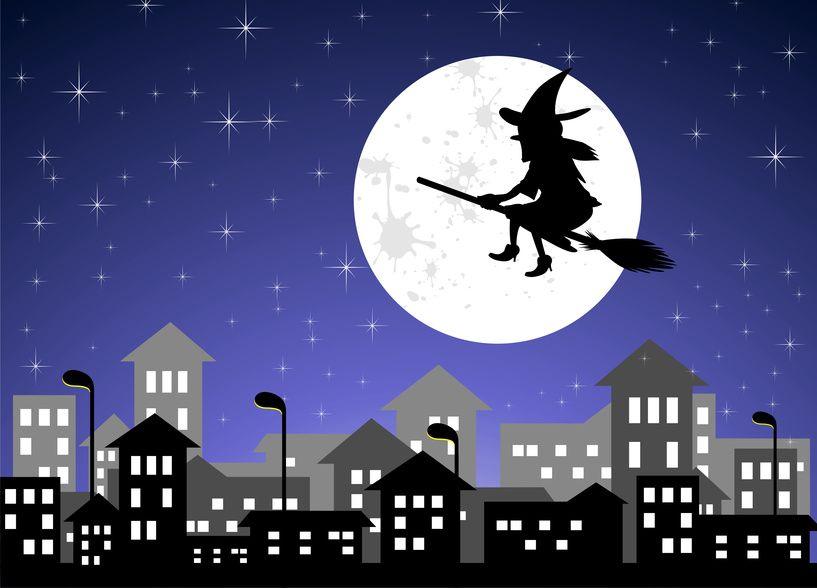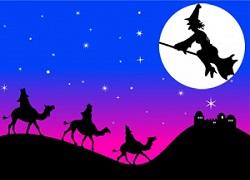The Befana
| ||||||||||||||||||||||||||||||||||||||||||||||||||||||||||||||||||||||||||||||||||||||||||||||||||||| |
| La Befana |
 |
|
In Italian folklore, Befana is an old woman who delivers gifts to children throughout Italy on Epiphany Eve (the night of January 5) in a similar way to Sinterklaas or Santa Claus.
Candy and presents if they are good or a lump of coal or dark candy if they are bad. |
|
In many poorer parts of Italy, a stick in a stocking was placed instead of coal. Being a good housekeeper, many say she will sweep the floor before she leaves. To some the sweeping meant the sweeping away of the problems of the year.
The child's family typically leaves a small glass of wine and a plate with a few morsels of food, often regional or local, for the Befana.
She is usually portrayed as an old lady riding a broomstick through the air wearing a black shawl and is covered in soot because she enters the children's houses through the chimney.
She is often smiling and carries a bag or hamper filled with candy, gifts, or both. |
 According to the legend the three wise men on their journey were stopped by an old woman with a broom who asked them where they were going. According to the legend the three wise men on their journey were stopped by an old woman with a broom who asked them where they were going.
They told her that they were following a star that would lead them to a newborn baby, and invited her to come along.
But she replied that she was busy sweeping and cleaning and did not go.
When she realized that the baby was the Redeemer that all the world had been waiting for her regret was so great that she continues to wander about Italy and at the Epiphany (January 6, when the Wise Men finally found the Child Jesus), begins rewarding good children and disappointing those who were bad. |
|
In European folklore the twelve days between Christmas and the Epiphany were the period in the year when the presence of witches was most felt.
Especially on that twelfth night (see Shakespeare), the night of the Epiphany, which was considered one of the magic nights in the year.
And our Befana with her broken shoes actually flies on a broom, another important magic symbol in a number of European cultures.
In anthropology the Epiphany, the last festivity of the Christmas period, is considered a celebration of renewal, announcing the coming of the new season. In the peasant culture that was the moment when forecasts and predictions on the future were drawn, and people used to sit around the fireplace telling fantastic tales.
On that magical night our great-grandparents used to look into the future interpreting natural phenomena. |
There are poems about Befana, which are known in slightly different versions throughout Italy. Here is one of the versions:
La Befana vien di notte
Con le scarpe tutte rotte
Col vestito alla romana
Viva, Viva La Befana!
The English translation is:
The Befana comes by night
With her shoes all tattered and torn
She comes dressed in the Roman way
Long life to the Befana!
Another version is given in a poem by Giovanni Pascoli:
Viene, viene la Befana
Vien dai monti a notte fonda
Come è stanca! la circonda
Neve e gelo e tramontana!
Viene, viene la Befana
The English translation is:
Here comes, here comes the Befana
She comes from the mountains in the deep of the night
Look how tired she is! All wrapped up
In snow and frost and the north wind!
Here comes, here comes the Befana! |
|
| |
|
|

|


 According to the legend the three wise men on their journey were stopped by an old woman with a broom who asked them where they were going.
According to the legend the three wise men on their journey were stopped by an old woman with a broom who asked them where they were going.